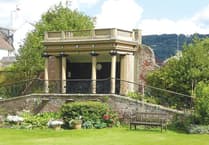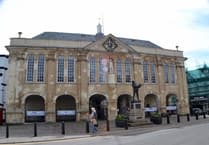PLANS for a combined heat and power plant at an empty riverside industrial park have won the backing of planners.
The Wyeside gas-powered scheme at the Valley Enterprise Park was originally intended to power a spa hotel next door, but the Welsh Government overturned planning permission for the 60-bed building in October on the grounds of flood fears.
Monmouthshire County Council’s planning committee granted outline permission for the power plant by 11 votes to 3 at last week’s meeting (Tuesday, December 5), despite opposition from the town council.
Applicant Martyn Harris said the plant would be able to use a “rare” merging of gas and electrical grid connections to supply energy, and would help regenerate the former Stelrad radiator plant, which has been unused for eight years.
A previous bid for a waste wood renewable energy plant was rejected by Monmouthshire councillors in February 2012 in the face of opposition from neighbouring residents, including members of the Riverside mobile home park.
Mr Harris said the plant would be in a 300 sq m building and would be raised up from the current ground level by about 3m to ensure protection from flooding.
It would have a slimline flue (about 840mm in diameter) of up to 21m in height, and energy would be fed into the grid to power neighbouring homes.
As a green system, it would capture normally wasted heat and create electricity as a by-product, delivering efficiencies “of up to 30% when compared to importing traditional power and using a conventional boiler.”
The application to Monmouthshire planners says: “VEP is well positioned amongst a number of major energy users, that could all be considered as beneficiaries of such a system.
“By arranging to deliver direct heat or hot water, or electricity, or both, the benefits of this type of installation can be realised by local stakeholders and contribute to Monmouth’s reduction in carbon footprint and increase in efficiency.”
Will Morgan of the neighbouring Hadnock Road Industrial Estate told planners: “The site of this proposed development appears to be directly over the sewer and drainage systems for the nearby industrial units in Hadnock Road. I question if it is wise to construct any building directly on top of a sewer.”
The area, yards from the Wye Valley AONB’s HQ and close to Monmouth’s 17th century Wye Bridge, is in a Zone C2 “highly vulnerable” flood risk area.
But planning officer Craig O’Conner said: “The proposed energy centre is a less vulnerable form of development (than the hotel) that is appropriate within a flood zone.”
Monmouth Town Council questioned why the scheme was still going ahead after the hotel plan was overturned, and claimed it did not meet its environmental claims of efficiency or provide significant employment.
Claiming that the scheme was disproportionate to its energy and heat output, town councillor Felicity Cotton said the heat generated by a 4MW CHP plant would only be enough to power an Olympic-sized swimming pool and a hospital.





Comments
This article has no comments yet. Be the first to leave a comment.